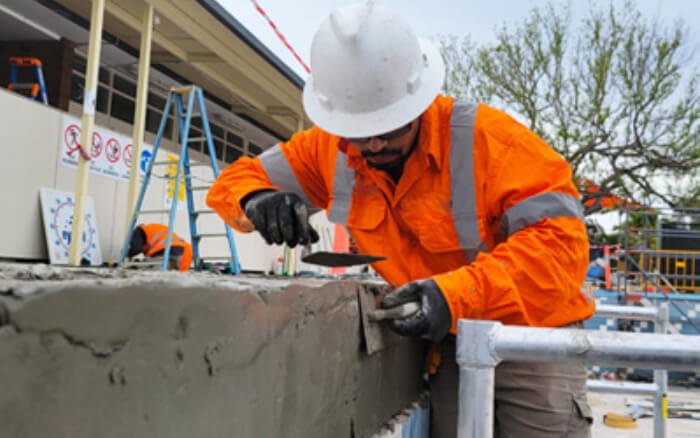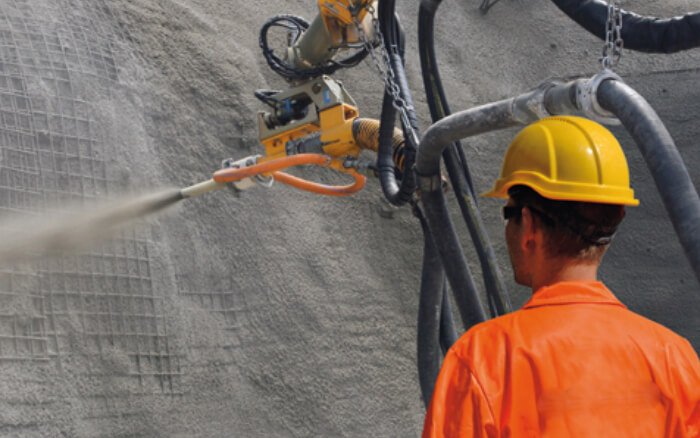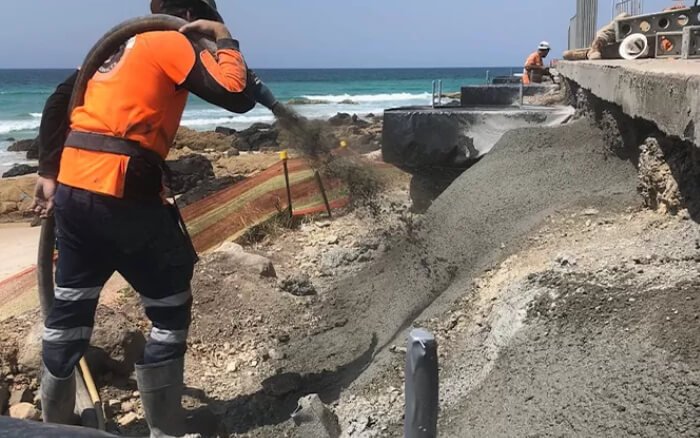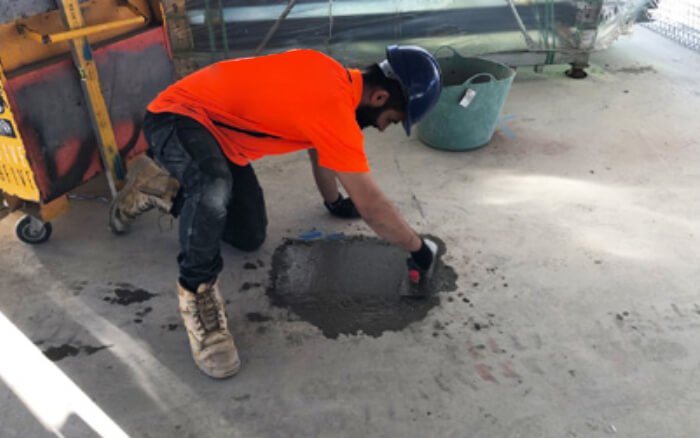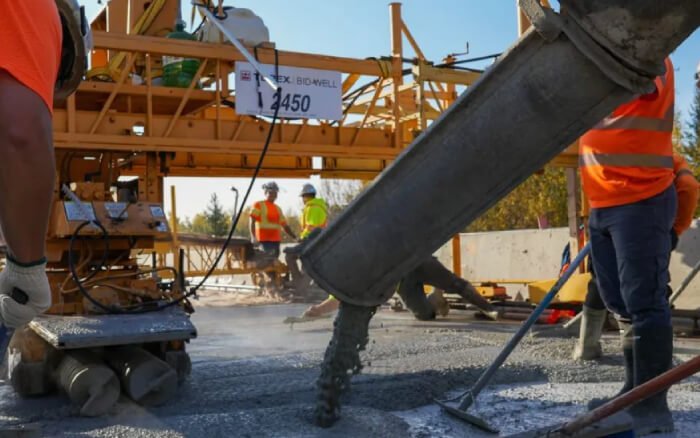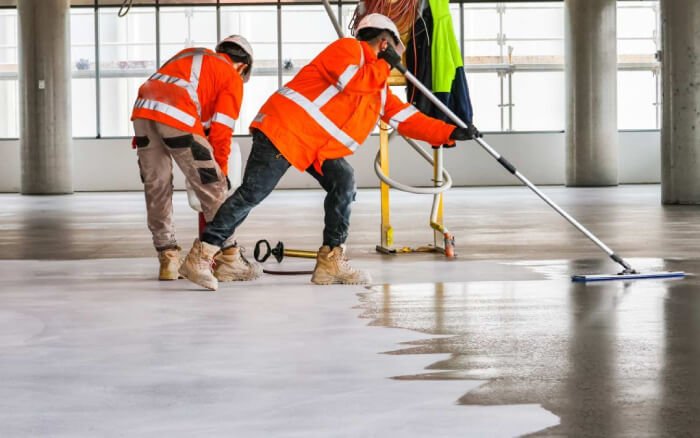What is an Expansion/Construction Joint?
 An expansion joint, also known as a construction joint, is a gap or space provided in a concrete structure to allow for the expansion and contraction of the concrete due to temperature changes, moisture, and other environmental factors. These joints are crucial in preventing cracks and damage that can occur when concrete expands or shrinks. They also help in accommodating any movement due to seismic activity or ground settlement.
An expansion joint, also known as a construction joint, is a gap or space provided in a concrete structure to allow for the expansion and contraction of the concrete due to temperature changes, moisture, and other environmental factors. These joints are crucial in preventing cracks and damage that can occur when concrete expands or shrinks. They also help in accommodating any movement due to seismic activity or ground settlement.
Purpose of Expansion Joints
The primary purpose of an expansion joint is to provide flexibility to the concrete structure, allowing for controlled movement. Some of the main functions include:
- Accommodate Temperature Changes: Concrete expands in hot weather and contracts in cold weather. Expansion joints help to absorb this movement, preventing cracks or surface damage.
- Prevent Structural Damage: These joints absorb movement caused by ground settlement, seismic forces, and shrinkage, ensuring the integrity of the structure is maintained.
- Control Moisture Movement: Expansion joints can absorb the moisture movement that can affect concrete surfaces, preventing cracking caused by excessive drying or wetting.
- Allow for Structural Flexibility: They help maintain the flexibility of the structure, accommodating changes in the underlying soil or other factors that could otherwise lead to foundation failure.

Types of Expansion/Construction Joints
Expansion joints can be categorized based on their specific application and the materials used. Some of the most common types include:
- Vertical Joints: These joints are used between walls, columns, and other vertical concrete elements to accommodate the movement of the structure.
- Horizontal Joints: Horizontal joints are used in floors and decks where movement is expected to occur due to temperature fluctuations and other factors.
- Isolation Joints: These joints isolate the concrete from other building elements, preventing any interaction that could affect the concrete's movement or cause stress on the structure.
- Control Joints: While similar to expansion joints, control joints are specifically designed to control the location of cracks by creating weak points in the concrete, allowing it to crack in a controlled manner.
- Construction Joints: These joints are formed during the concrete pouring process to separate different pours of concrete. They are essential for maintaining the continuity of the structure and allowing for future expansion or movement.
Benefits of Expansion Joints
Incorporating expansion joints into concrete structures offers several benefits, including:
- Crack Prevention: Expansion joints reduce the risk of cracks in concrete surfaces, which can be costly to repair and affect the aesthetic and structural integrity of the building.
- Improved Durability: By allowing for natural movement, expansion joints increase the overall lifespan of concrete structures by preventing damage caused by thermal expansion and contraction.
- Cost-Effective Maintenance: Expansion joints help to avoid costly repairs by reducing the need for frequent maintenance due to cracks or other structural issues.
- Better Aesthetics: Properly installed expansion joints allow for seamless integration with the building’s design, ensuring that the joints are discreet and don’t detract from the visual appeal of the structure.
- Compliance with Standards: Expansion joints are often required by building codes to ensure the structural integrity and safety of concrete buildings, especially in regions prone to temperature extremes or seismic activity.
How Expansion Joints are Installed
The installation of expansion joints involves several steps to ensure that they function correctly. The process generally includes:
- Planning: Before installation, careful planning is required to determine the correct placement of expansion joints based on the size, layout, and environmental conditions of the concrete structure.
- Preparing the Surface: The surface of the concrete is cleaned and smoothed to ensure proper bonding with the joint filler materials.
- Installing Joint Materials: Various materials are used for the expansion joint, such as rubber, foam, or compressible materials, which are placed in the designated joint gap to allow for expansion and contraction.
- Sealing the Joint: The joint is sealed to prevent water or debris from entering, which could cause damage or reduce the effectiveness of the joint. A sealant or waterproofing material is typically applied to the joint's surface.
- Monitoring Movement: After installation, the expansion joint should be periodically monitored to ensure it is functioning as expected and allowing for the necessary movement in the structure.
Applications of Expansion Joints
Expansion joints are used in various types of concrete structures, from roads and bridges to buildings and industrial facilities. Some common applications include:
- Roads and Highways: Expansion joints are used in pavement slabs and bridges to accommodate movement caused by temperature changes, traffic loads, and ground settlement.
- Buildings and Foundations: Expansion joints are commonly used in large buildings, skyscrapers, and industrial facilities to prevent cracking due to thermal movement or seismic activity.
- Parking Garages: Parking garages, which are subject to heavy loads and temperature fluctuations, often require expansion joints to maintain structural integrity and prevent cracking.
- Dams and Water Structures: Expansion joints are essential in dams and other water-related structures to allow for movement caused by water pressure, temperature changes, and ground settling.
- Airports and Runways: Expansion joints in runways are designed to handle the heavy loads of aircraft and the temperature extremes that affect large concrete surfaces.
Conclusion
Expansion or construction joints are critical components in concrete structures, helping to prevent cracking and ensuring the long-term durability and stability of the building. By providing a controlled space for movement due to thermal changes, moisture, and other environmental factors, these joints play a crucial role in maintaining the integrity of concrete elements. Whether for roads, bridges, or large buildings, expansion joints ensure that concrete structures remain strong, flexible, and durable for years to come.


